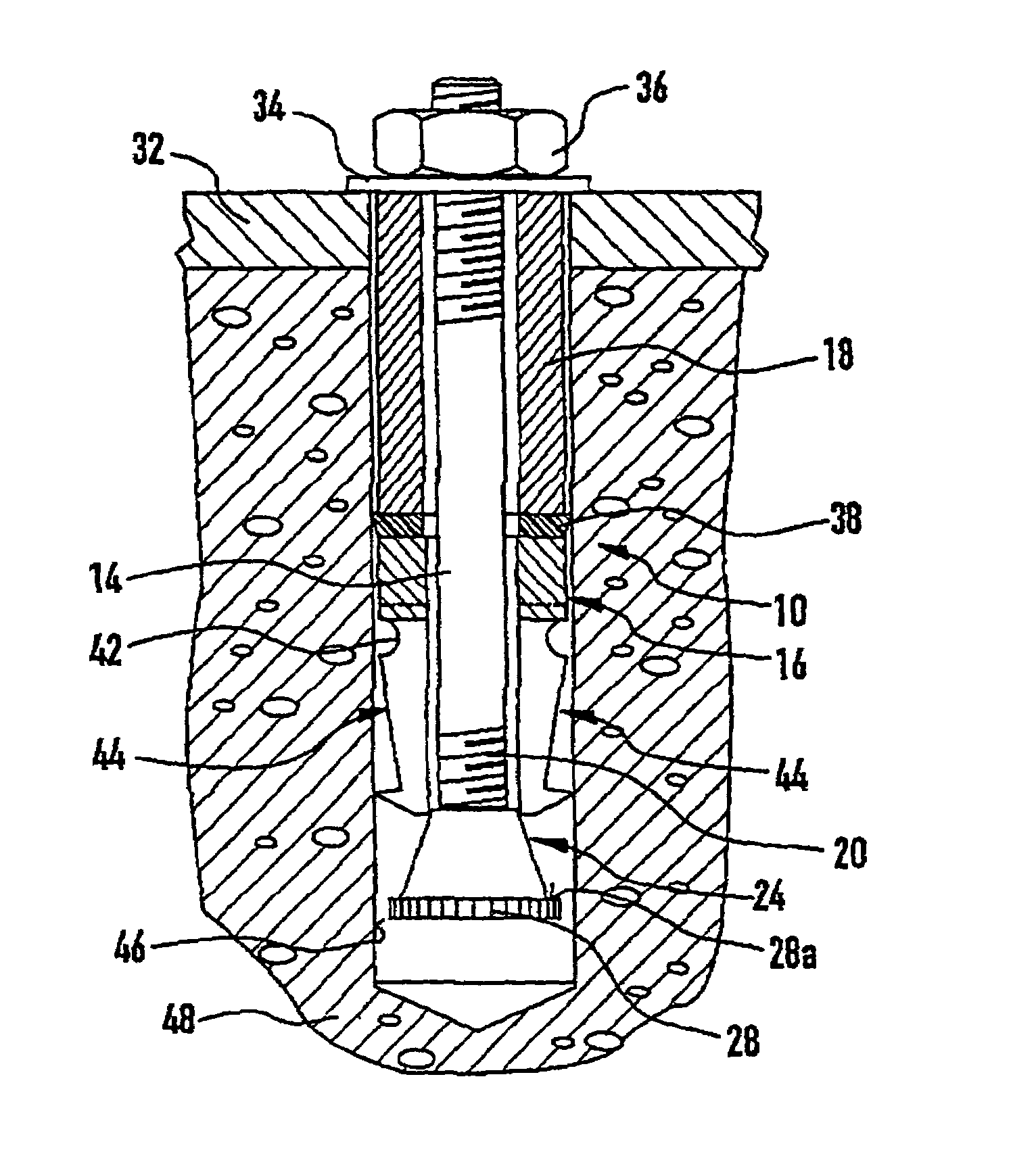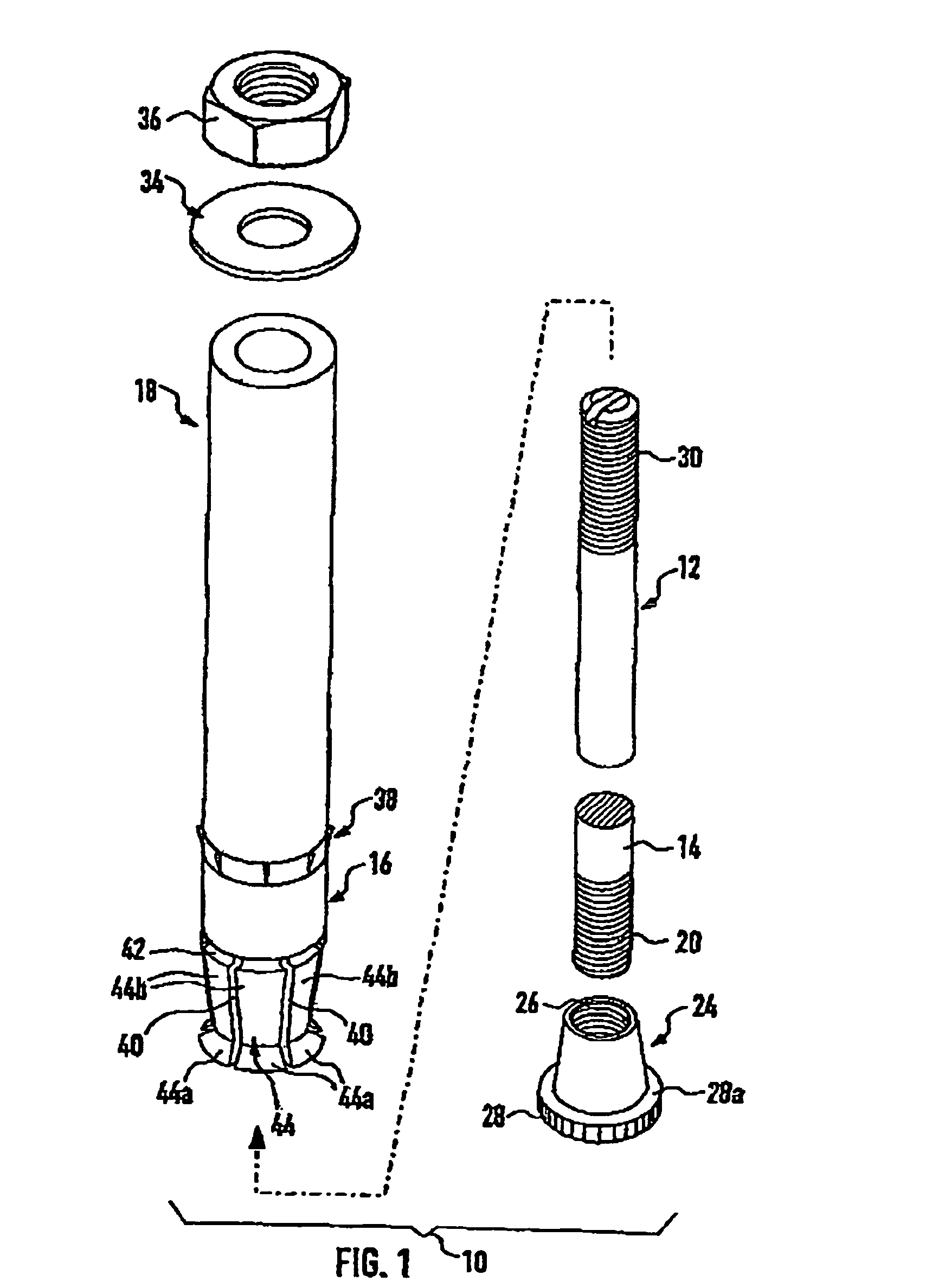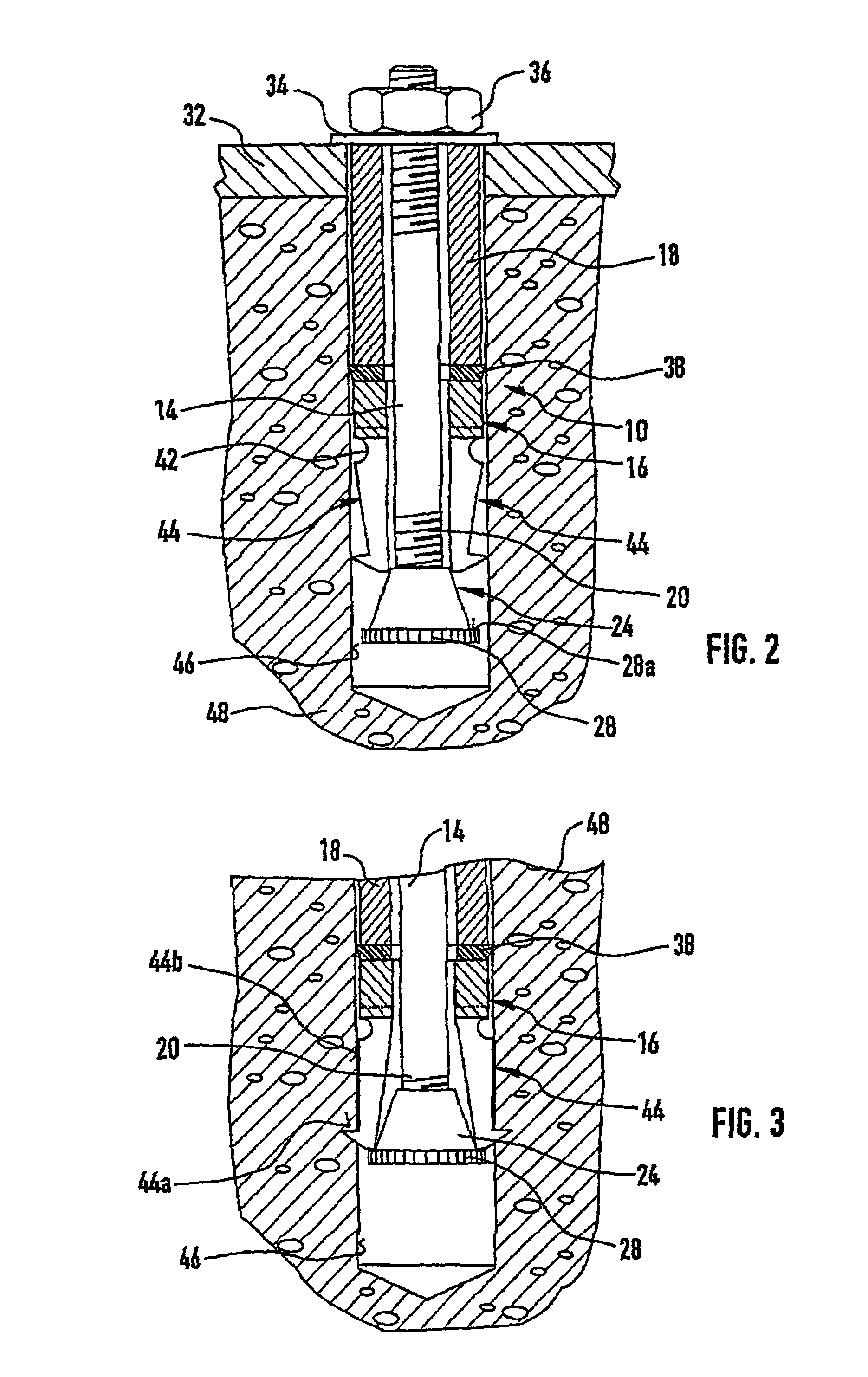Undercut anchor element that can be mounted with positive engagement
- Summary
- Abstract
- Description
- Claims
- Application Information
AI Technical Summary
Benefits of technology
Problems solved by technology
Method used
Image
Examples
Embodiment Construction
[0010]The undercut anchor element which is illustrated in the drawings and is denoted in its entirety by 10 is composed of the components which are explained in detail below, namely an elongate anchor bolt 12, a tubular base component 16 disposed so as to be longitudinally displaceable on the cylindrical shank 14 of the anchor bolt, a spacer sleeve 18, a tightening head 24 which in the illustrated embodiment is screwed on a thread 20 of the anchor bolt 12 at the lower end in the drawing and is provided with a threaded bore 26 which widens conically from the shank 14 of the anchor bolt. On the end of the tightening head 24 which is innermost in the bore a circumferential annular projection 28 is provided which projects radially and is provided with a knurling on its circumferential surface and of which the upper radial boundary surface 28a facing the base component forms a stop surface, the function of which will be explained below. On its end region opposite the tightening head 24, ...
PUM
 Login to View More
Login to View More Abstract
Description
Claims
Application Information
 Login to View More
Login to View More - R&D
- Intellectual Property
- Life Sciences
- Materials
- Tech Scout
- Unparalleled Data Quality
- Higher Quality Content
- 60% Fewer Hallucinations
Browse by: Latest US Patents, China's latest patents, Technical Efficacy Thesaurus, Application Domain, Technology Topic, Popular Technical Reports.
© 2025 PatSnap. All rights reserved.Legal|Privacy policy|Modern Slavery Act Transparency Statement|Sitemap|About US| Contact US: help@patsnap.com



